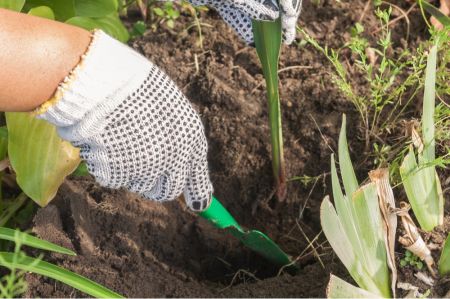
Gardeners will always want to move perennial garden plants at some point. Gardens are ever-evolving, and sometimes a shuffle around is needed, maybe due to the design or a new patio or perhaps a new house extension. Maybe it is to make room for even more plants or even because they need to be repositioned as they aren’t happy where they are. Whatever the reason, moving perennials usually works really well as long as it is done at the right time and with care. Here are our tips for moving your plants and keeping them in good condition during the process, so they thrive in their new home.
When should you move perennial garden plants
-
Your garden plants can be moved in the spring or autumn when the plants are dormant, just finished flowering or have only a little new growth.
-
Moving plants when they are blooming can put the plant under a lot of stress, and its chances of thriving are greatly minimised.
-
You can move them any time, but very carefully, so spring and autumn are best.
-
Also, if the weather is warm, move them on a cloudy day or at least in the afternoon.
Move perennial garden plants the right way
When you move your plants, make sure there is a little root disturbance as possible unless you are dividing them.
-
Dig around the root ball and gently lift the plant.
-
Ideally, you will already have your new planting hole ready to move the plant into straight away and if needed, incorporated some well-rotted organic compost in the hole plus given it a good water.
-
Move your plant to its new position, fill in with soil and make sure it is well watered.
-
The water helps the plant to establish better after root disturbance during the move.
-
If you do move a plant in flower, cut the flowers off! Use them in a vase indoors and give your plant the best chances of survival.
How to care for recently moved perennial garden plants
Some perennial plants won’t take too kindly to be being moved, and you might see some leaf drop, or it may not flower in the first year after moving, but the majority will soon establish and provide you with some lovely growth. Keep an eye on it, especially for watering because it might need a little more while it is getting used to its new home. Don’t forget to remove any dead or diseased material and if needed, protect them from hot sun or freezing weather conditions. Your plant will soon grow strong and provide you with many more years of lovely growth. Hopefully, it will thank you for moving it!
For garden tools that will help you get the job done easily visit us at Lakeside to choose from our range.









